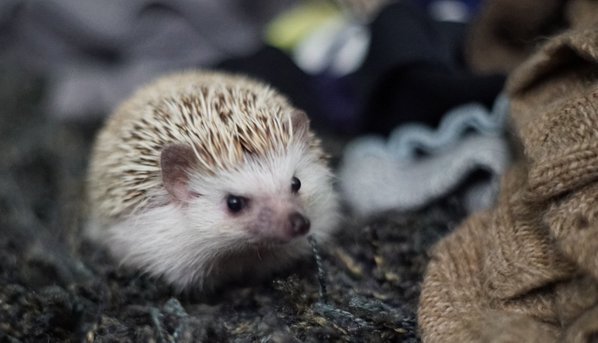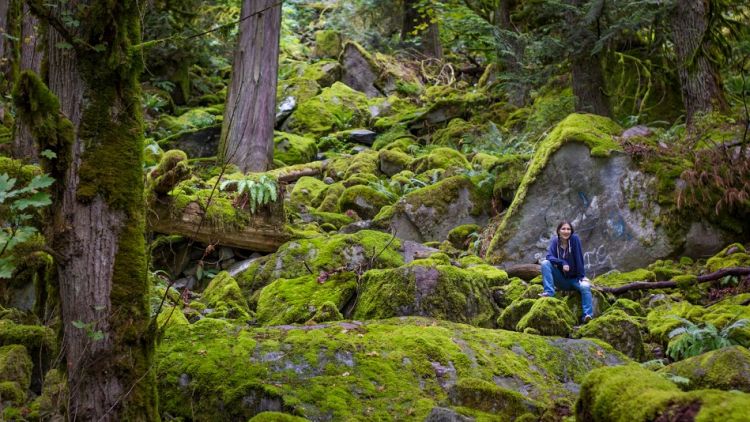
Mika McKinnon – Geophysicist, disaster researcher, scifi science consultant, journalist, public speaker, irrepressible educator. Specialist in fluid dynamics, disasters, geophysics and fieldwork. Master of creative applications of real science to fictional situations.
Mika wears many hats. One of those rare people who can make hard science palatable and fascinating to the average Joe, Mika was the science consultant on two Stargate series. She worked with Louis on Stargate Universe.
Mika joined The Friends of Louis Ferreira in October 2015 with an exclusive interview in Ferreira Fest 70.
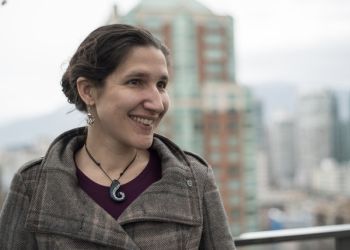
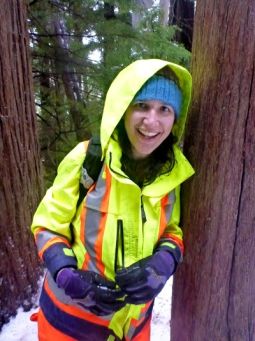
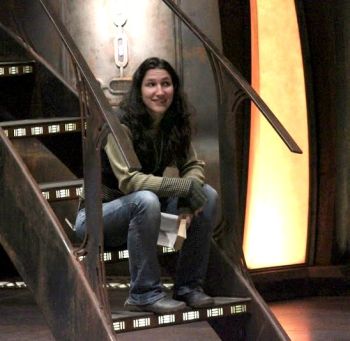
AN INTERVIEW WITH MIKA McKINNON
We’ll let Louis introduce Mika. Listen to the sound clip here:
LF – Well, meet Mika, everyone. I first met Mika on Stargate when they brought her in as the science consultant. I, myself, am not very science-y, so, beyond the fact that she was this beautiful woman, inside and out, she could then put calculations on a board that would rival Einstein.
And I just sat there in awe as she’d be constantly correcting herself and mistakes, as if any of us would ever have a clue that what she was possibly doing, was, in any way, could be somehow wrong. It just was beyond impressive in every way.
She was kind enough to help me with my son’s tutoring for a while. And she would come over to the house and tutor him and was exceptional in every way. And I am so, so grateful to her, and that wonderful time we spent together. So that’s my Mika.
And so, without much further ado, here’s Mika McKinnon!
Listen to the sound clip here:
FF – Hi Mika, this is Bea, and we’re so happy to have you at Ferreira Fest this evening. Welcome!
MM – Thank you very much. I’m happy to be here.
FF – Well, let’s start with something really simple. Who is Mika McKinnon, and what gets you up in the morning?
MM – It’s going to sound a little funny, but I really am fairly science obsessed where it permeates everything that I do to the point where I really am a scientist. Who am I? I’m a scientist. I’m a very overly enthusiastic scientist.
FF – I read on your website in various places that you call yourself an irrepressible educator, which seems to say, “OUTREACH” in big, bold letters. So, what are some of the activities that you do to follow that passion?
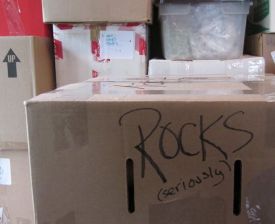
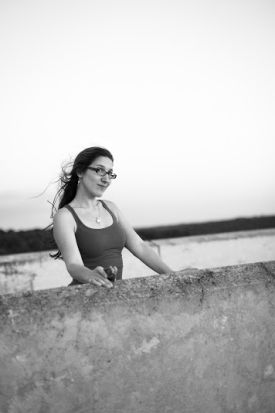
MM – So, part of that is by working in the film industry. I am a science consultant. So anytime there are people who want to create a new show, and they want to have some element of science in it, I am so happy to teach them enough that they can come up with interesting plots and then take it and run with it.
And it isn’t about having perfect accuracy in the shows, it’s about having something inspired by science, inspired by this crazy, weird world around us.
And then the opportunity to go to conventions because of that, and talk to people about these shows and to be able to answer their crazy questions like, “What about the aerodynamics of dragonflies?” or “Can you tell me about perchlorates on Mars?” and just be like, “Wherever your interests take you, let’s engage with that and see what we can figure out!”
I do a lot of work with natural disasters in particular because if you know more about how the disasters work, then you are less likely to get in trouble from them.
FF – What exactly do you do with that? Is that also educational? In that you educate people about disasters? Or what, how does that work?
MM – So, what I am a complete specialist in — I’m a Master of Disaster in — is landslides. So, when landslides are small, they’re really simple and easy to explain. It’s like a block sliding down a slope and you can go, “Oh, that chunk of rock is going to fall down and it’s going to end up over there.” And the answer is, just don’t be there when it lands. Perfect.
But when they get too big — when they get over a half million cubic meters is the technical cut-off — they start acting really strangely. They move faster and farther than we think they should. So I did a lot of research into trying to understand why that happens, and got completely stuck. It’s too big of a question.
So I went, okay, I don’t care about why it happens. I just want to be able to predict where it’s going to happen. How far, how deep, how fast things will go.
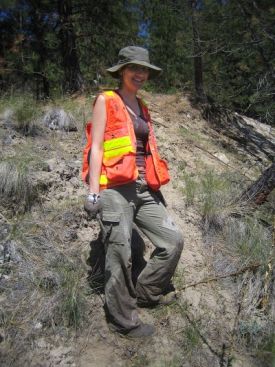
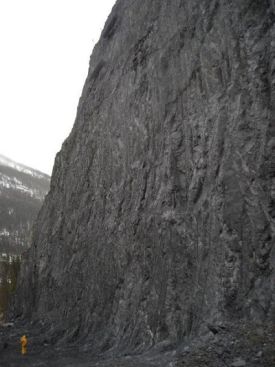
So we can say, “Look at that hillside! That whole hillside is going to come down. It’s too big to stop it; let’s not put the hospital down there in the run-out zone.”
So I did a lot of research into that, and then made the tools more easily accessible and affordable so that something like a small town could actually afford to do this type of hazard assessment.
FF – Right. So something like Mt. St. Helens is like totally down your alley, right?
MM – Yes. Or the Oso landslide — the Steelhead landslide — that happened in Washington last year?
FF – Right.
MM – So something like that. Looking at that landslide and going, “It’s too big to keep it from happening. But if we could afford it, could we predict where it was going to go so that we didn’t have this town at risk from it?”
FF – Right, right. Being an educator, one would assume that mentoring, and especially educating, mentoring other people is in your genes. Let’s talk a little bit about who your mentors were, and who are you indebted to, in getting your interest in mentoring and getting that passion for outreach and education.
MM – Oh, I am so greedy! Every time I see someone doing something interesting I snuggle up next to them and ask, “So how did you start doing this? What can you teach me? Show me your magical ways!”
I had an amazing high school physics teacher. One of our final exam projects was that we had to design a tiny rocket and predict its trajectory, and then blast it off and try and get it to go between the goal posts on the football field.
FF – Oh god.
MM – That was my final exam for the class.
FF – That sounds great.
MM – And my midterm exam involved designing and building a guitar. So it was a very, very practical, hands-on class. It was amazing.
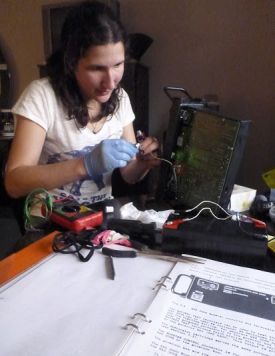
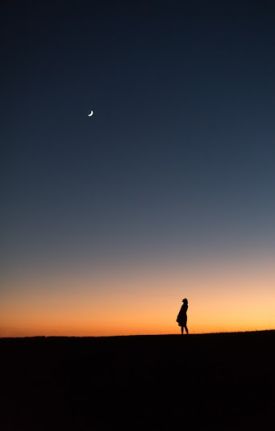
When I was in high school I did something called the Summer Science Program which is when high school kids on their summer break track near-Earth objects. So, asteroids that could crash into the planet and kill us all. And we do actual hardcore, serious research, and then submit that to the global database. So it’s real observations that are actually used by scientists to keep us all from dying.
And my TA there, Amy Barr, was somebody who taught me a lot about what did it mean to actually do science. We’ve actually stayed in touch. I was talking to her this summer because it turns out when all this Pluto stuff was happening, she was one of these names that kept popping up as an expert. And so I went chasing her down again and went, “Teach me! Teach me about collisions, and sub-surface oceans, and how on earth Pluto could possibly be an active planet. Because I’m confused!”
FF – Oh, that’s awesome!
FF – So, it’s always nice when you run into those people and you feel like, oh, this is really somebody I want to learn from.
MM – Oh yeah. Once on the set of Stargate I had the opportunity to meet both Bill Nye and Neil DeGrasse Tyson, and they were fantastically supportive and interesting. And we hit up Martian perchlorates — I’m telling you, the geochemistry of Mars is fascinating to everybody! And getting tangled in that and then taking Neil and asking him, “So, what is your life like as a public scientist? How is this a career? How did you pull this together? How did it start? What are the things you wish you’d done differently?”
That was an amazing opportunity that I’m so grateful that I had that chance to have.
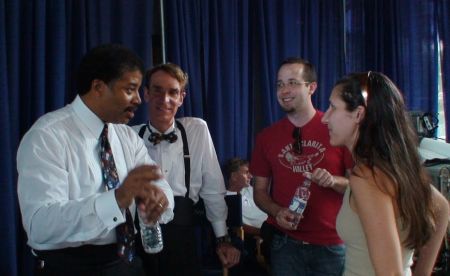
photo by Joseph Mallozzi
FF – That’s great. You’ve just mentioned Stargate. People probably ask you a lot about the big ones, in capital letters there, like Stargate, or your work on io9, but tell us maybe something about your lesser known jobs that you’re truly proud of.
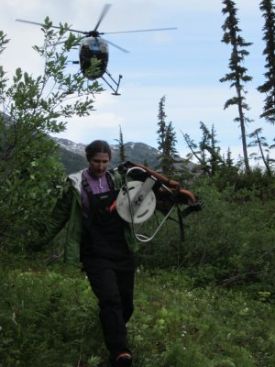
MM – So, for a while I worked as a field geophysicist. I like describing a field geophysicist as being a mix between MacGyver and a James Bond villain.
Because what you do is, you get into a helicopter and you fly off to somewhere remote and you unload all of your equipment, and I’m talking like 200-400 pounds of gear; it’s an obscene amount of equipment.
And you strew all this equipment out in the wilderness, and it all gets rained on, and it all breaks. You’re trying to fix all of this delicate electronic equipment with whatever you’ve got stuck in your pocket.
[It’s] like the Discworld witches, where you try and stash interesting things in your pockets!
! It’s like, “Oh, I’ve got electrical tape, and dental floss, and a light bulb… I can use this to make a voltmeter!” And totally channeling the MacGyver part of that.
Then you have to do geophysics. That’s the science of you’re up here at the surface, and you want to know what’s under the surface, but it’s really expensive and difficult to actually go look yourself.
So instead you do something to provoke the planet.
You blow it up.
You zap it with 2,400 volts of electricity.
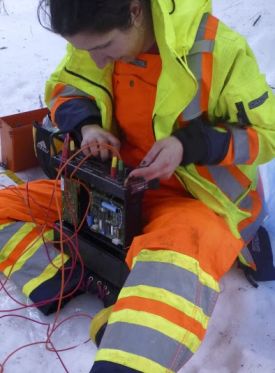
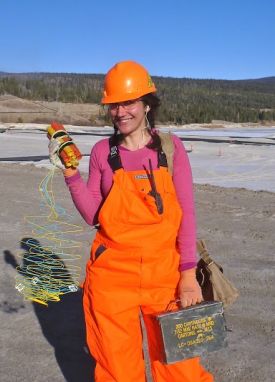
You do something, and you see how that signal propagates through the Earth and then use that to make this inversion map. So you have the answer and you need questions.
It’s very Douglas Adams: “Forty-two is the answer, what is the question?”
FF – What’s the question?!
MM – That’s what geophysics is in a nutshell!
So, doing that type of work, I love doing it because you had no one else but what you had with you to rely on. You had no internet, you had no ability to call your boss. If you got out there and you did the survey and something didn’t work, you had to change and adapt and figure it out and make it work.
FF – Problem solving is something that you really love doing.
MM – It was very, very, very fun.
And it was all sorts of things like, there was one day it turned out that my signal was having problems because a grizzly bear had decided that my wires were all nice and cozy on a rainy day, so it kept cuddling into my injection point where I was pouring electricity into the Earth.
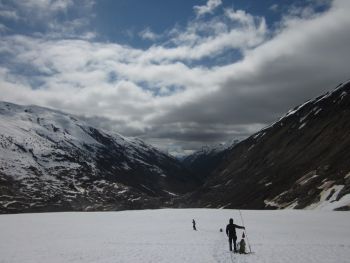
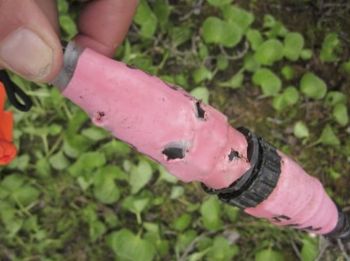
FF – Oh no!
MM – I was trying to figure out first of all what my problem is: I’m measuring the resistance of a grizzly bear instead of the planet.
Those two things are not equivalent. And second, how do you convince a grizzly bear, very politely, very nicely, that maybe they don’t want to stay there anymore. And would they just mind wandering away again? When you’re doing an induced polarization survey, you’re pouring electricity in a positive direction, then negative, [then] positive.
And what you’re really looking for is how it changes at the transitions. It should make beautiful little squares. You actually look at the corners to see how it doesn’t quite shape right. And I was noticing I was getting shark fins instead of squares. They were just full on, big, long, curving things.
FF – Right, right, right.
MM – That’s not right. This is way too conductive.
FF – Somebody please move the grizzly bear!
MM – Exactly! Could you just, you know, nudge on down line?
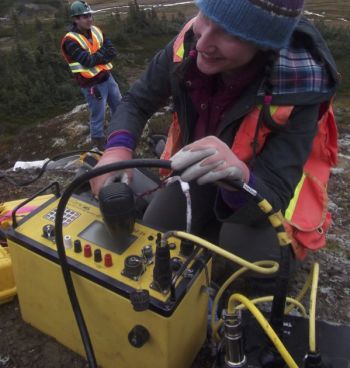
FF – Oh, that sounds fantastic. What fun, though. You never know what’s coming up. What are some of the projects that you’re currently working on?
MM – So, at the moment I’m just about to head down to Florida where I’m going to go on a shark tagging expedition with some students out of the University of Miami. And then I’m going to go to TimeLord Fest which is a Doctor Who convention in Tampa.
After that I head down to Ecuador where they’ve got a volcano attempting to erupt near Quito. So I’m going there kind of as a… I don’t want to call it disaster tour because I desperately hope that it does not erupt and that nobody dies.
But I’m not technically working while I’m down there, I just suspect I’ll end up working if I get close enough.
[After that, the] science communication community has decided that they’re going to hold their first-ever West Coast writer’s retreat and I’m going to go to that and present at a writer’s workshop on how do you communicate science effectively in the written format.
FF – Oh, that sounds great. Ooh, I’d be so interested…
MM – That’s my next month and a half.
FF – Wow. In a month and a half, all that.
MM – Yes!
FF – Tell us a little bit about what your job on Stargate Universe was. And most of us have seen your work, probably through Stargate Universe because Louis was in it. So, what specifically…
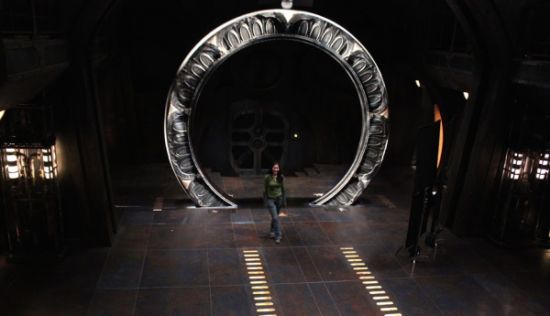
MM – Everybody knows my handwriting.
FF – Yeah, so what specifically did you do for that?
MM – So, I’m a science consultant for Stargate, and when this first started, that meant I was just everybody’s handwriting. So when you have your genius scientists up at the whiteboard problem solving they can’t sit up there and go,
“Oh, I’m stumped by Force = Mass x Acceleration” because then we’re going to be really quite disappointed that they can’t get past high school physics.
But it also can’t be complete gibberish, because we’ve got a lot of people who know some science. So it needs to be recognizable, related to the plot. We can’t have random rocket equations when we’re talking about oxygen supply!
And yet it needs to be complicated enough to be a worthy challenge of our heroes. So that was what I was doing. But the more I worked on the show, that job evolved. So in the beginning, it was just “be their handwriting”, that’s it.
But then it later became this thing where they had an on-set scientist, we’d chat, and I might be a particularly enthusiastic person, so when people would ask about my equations up on the boards, I’d teach them about them.
And the writers would wander by, and then they’d start asking me science questions and go, “Oh! Okay, so, we’ve got this problem where the air is running out, what geology could they go looking for in order to fix this problem?”
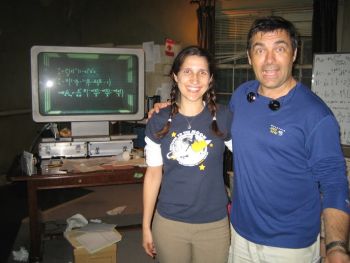
Or, my favorite was when we had an astronomical Big Baddie: the universe needs to try and kill everybody every twenty-two minutes. And the original idea was, “Let’s just have a really, really, really slow pulsar.” But the problem with that is if you’ve got a pulsar that’s spinning that slowly so that beams only come by every twenty-two minutes — that’s forty-four minutes for it to go all the way around — then the electric field you’re generating is going to be about as dangerous as if somebody took the kitchen magnets off the fridge and did cartwheels with them in their hand.
Yes, it generates a field, but it’s not one anyone is going to notice, much less kill everybody. It was this chance of, “Okay, so how can I change this, just a little bit, to make the science plausible without changing any of the plot and maybe impacting two lines of dialogue as subtly as possible? Keep everything the same but fix that problem.”
That particular case, we ended up having a feeder star that was on a big orbit. We had a pulsar that was right on the critical mass of whether or not it was pulsing. And every time the feeder star came by, it would up that mass just a tiny little bit and pulse, pulse, pulse, pulse, pulse, and then the feeder star would pull out of reach again and the pulsar would be starved and turn off again. So it was actually an uncountable number of pulses were just happening in microseconds.
FF – Right, right. Yeah, I remember that episode, it was the cliffhanger, too, at the end of season one.
MM – Yes!
FF – Yeah. So that particular astronomical phenomenon was your work?
MM – Yes. And it’s something we’ve never seen it in real life, we’ve never found a system like that, but there’s also no reason why one could not exist.
FF – Exactly, I was just going to say that it hasn’t been proven that it doesn’t exist, because how do you prove a negative?
MM – Yeah. There are things that are implausible and there are things that are like time travel is at this point: impossible, but you can also make up rules for it and go, “Okay, so how do we apply these consistently?”
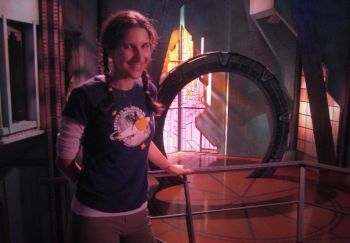
If this one thing were true, what would all the consequences of it be?
That’s my favorite part of working on fiction. You get those little moments where you go, “All right, let’s play with science! Let’s say, if this is true, then what?”
Stargate was unusual in that they hired a science consultant and then kept them for several years. There was one before me.
It was my friend Steven Conboy, but he met a pretty girl and a telescope in South America, and between the two of them, he disappeared.
Telescopes, you just can’t resist them!
So I started working there instead, and then I stayed. Because it was just the two of us [and] I had all of Steven’s notes, that meant that we could keep consistent science between, not just all of Stargate: Universe, which was my baby, but also on Stargate: Atlantis, where we have the specific type of traversable wormhole that we’re using and what rules of time travel we’re using, so that we can keep these things between episodes the same.
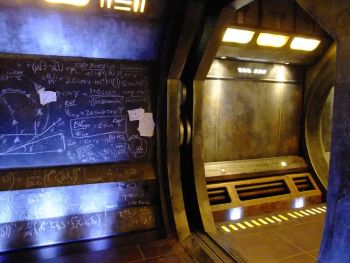
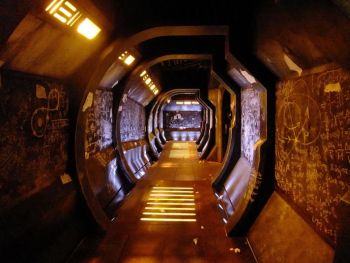
And it was really, really fun with Stargate: Universe because I was given a chunk of a set to work with, Rush’s Crazy Hall.
FF – Right.
MM – [In the Crazy Hall], I could leave clues — Easter eggs — to future episodes because I knew what was coming, and go, “Okay, so what types of problems are we going to encounter in them?”
FF – Oh.
MM – Or in the episode where Rush is trying to decrypt how to use the chair and we’re flashing back to him at university teaching a cryptography class?
FF – Right.
MM – There’s real cryptography in that episode where if you go through and start looking in the background, and this is your particular passion and you love breaking codes, there are codes there you can break and get a clue for how that episode is going to end.
FF – Oh, that’s so cool!
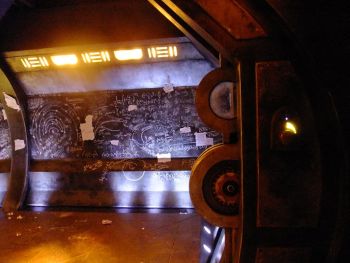
MM – [That kind of experience is] something that you can’t get if you just have a science consultant who does one episode and then disappears and never comes back again. There are a couple of television shows that do that, but Stargate was very unusual for doing it.
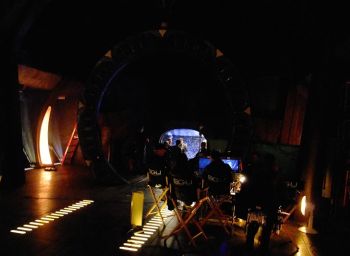
We got to the point where the others in the Props department had a notebook that I made. “Oh, so you unexpectedly needed a set of equations and you didn’t have me on set that day? Okay, so here’s your notebook. Use the scenes from this page all together, they’re all right, and this will be consistent, and stay within our world of science, and will make sense.” They were labeled for what types of problems they could be used with.
It was like the Cheater’s Guide to the Science of Stargate.
FF – Oh, perfect, perfect. I love that. Man, I would love to have that book! So, talking about Stargate: Universe, was that where you met Louis? Or had you met him before?
MM – Nope, that was where I first met him. Before I ever saw him on set working, I met his son who was visiting set and asked me about our equations. And Louis walked up to us while we were discussing the beginning and end of the universe. It was pretty fantastic.
FF – Do you have any memories of observing him work or working with him or, I mean, since he’s not the scientist, obviously, he was the military dude so he probably didn’t have too much to do with your signs, but were you able to observe him work, or work on a scene with him?
MM – Yes. Pretty much any time that Rush and the Colonel were arguing about things in a room filled with science equations I would be there. It was always amazing to me how quickly he can flip. He’s got a grim character — the Colonel is serious and almost angry — yet as soon as the camera stops rolling, he’s all laughter and friendliness, and just switches right there. He’s incredible.
FF – Here’s a question that all of our interview guests get to answer – if you could describe Louis in four words, what would they be?
MM – That is a tough question. Irrepressible. Irascible. Those are a couple of “ir” words there simultaneously. Spontaneous. And gentle.
FF – Those are fantastic words, Mika. Thank you so much. It was great. We’re almost at the end here so please tell us a little bit about how people can keep up with you online or over social media. And let us know again when your next public appearance at a con or whatnot is, where people can go and make personal contact.
MM – Absolutely!
I write every single day on space.io9.com, writing about pretty much any aspect of our physical universe.
I am very active on Twitter as @MikaMcKinnon. And also on Facebook under the same name although I’m less active there.
I am next heading to TimeLord Fest on October 26, 2015 in Tampa, Florida. And then, after that my next convention is going to be Dragon Con in Atlanta, my home base that I go to every single year.
FF – Well, we’ll see you there again. Thank you so much, Mika, for your time and for your expertise and that wonderful unique insight into science in science fiction.
MM – Thank you so much for having me! It’s been totally fun and I always love the opportunity to help out Louis, he’s been so good to me.
FF – Thank you so much, we’ll talk to you soon.
Thanks to Casey for the transcript!
All photos by Mika McKinnon unless credited otherwise.

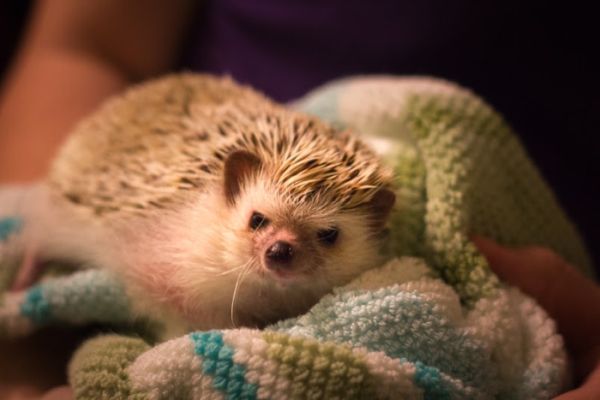
MM: I’m completely distracted because it turns out my hedgehog has broken out of his cage and is wandering around the room and just snuck up beside me… That’s not what I expected! Jailbreaking hedgehog!
FF: Well, you never know when those hedgehogs feel like they need to do a natural disaster, right?
MM: Exactly! Escapee! All right. He’s safely back where he’s supposed to be where I can keep an eye on him…
